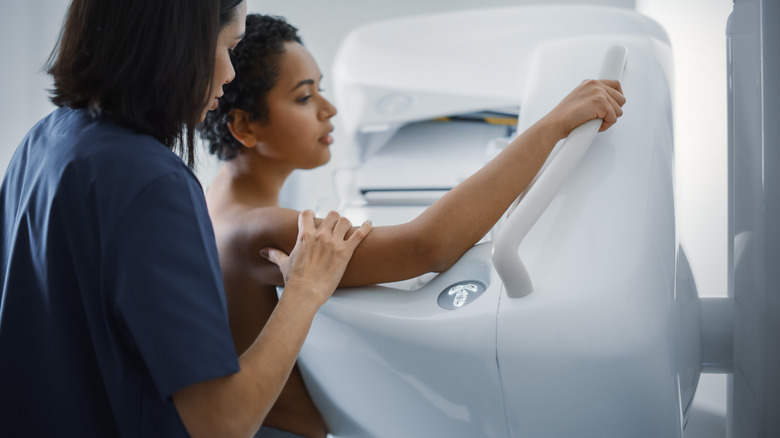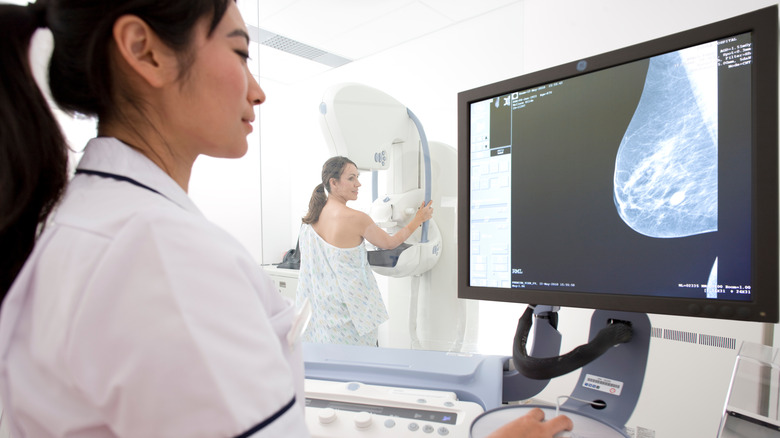This Is What Really Happens When You Get A Mammogram
Mammograms are an incredibly common exam and effective tool for detecting breast cancer in women. So common that in 2018, the CDC reported roughly 67% of women above age 40 had a mammogram within the past two years, and reasonably so. Mammograms are often considered a life-saving screening tool by cancer specialists and physicians, with imaging so powerful that it can detect breast cancer up to three years before a lump can be felt (via CDC).
Additionally, Susan G. Komen reports that mammograms are particularly good at finding breast cancer in women 50 and older and can correctly identify about 87% of women who actually have breast cancer (false positives are possible). If an abnormal mammogram is detected, your doctor may order additional testing to help determine whether or not it is breast cancer for sure. If your doctor's ordered a test you may be wondering what to expect and what really happens during the procedure. Let's take a look.
What to expect
During your mammogram appointment, you'll undress from the waist up and face a tall x-ray machine. A technician will help position each of your breasts, one at a time, between two imaging plates that will slowly compress the breast with gentle, gradual pressure. This helps ensure your breast is flattened and still in order to get the most accurate imaging, according to Planned Parenthood. You can likely expect the duration of the exam to last about 15 minutes.
The technician won't read you the results of the exam or be able to determine signs of cancer. Rather, their job is to ensure proper image quality before it goes to the radiologist. Once received, the radiologist will look at the images and will determine whether or not signs of cancer are detectable and then pass them along to your doctor who will pass the results to you. It typically takes a few weeks to get the results back, according to the CDC.
Pain reduction strategies
While the thought of breast compression sounds uncomfortable, the compression portion of the exam typically lasts less than a minute. However, if you're concerned about the potential for discomfort, there are pain reduction strategies to consider.
Health Images suggests one of the best ways to avoid unnecessary discomfort is to schedule your appointment on days of the month that aren't right before or during your menstrual cycle, as some women experience tender breasts at that time. It's also suggested that certain dietary modifications can be made to reduce discomfort. Salt and caffeine can have some of the biggest impacts on how much discomfort you experience and reducing intake beforehand can minimize pain.
If possible, you'll want to reduce salt intake a week prior to the appointment and caffeine intake two weeks prior. Finally, share your concerns with your doctor as she may have suggestions on how to further minimize discomfort. Above all, it's important to get your screenings and pain shouldn't need to be a prohibiting factor.



